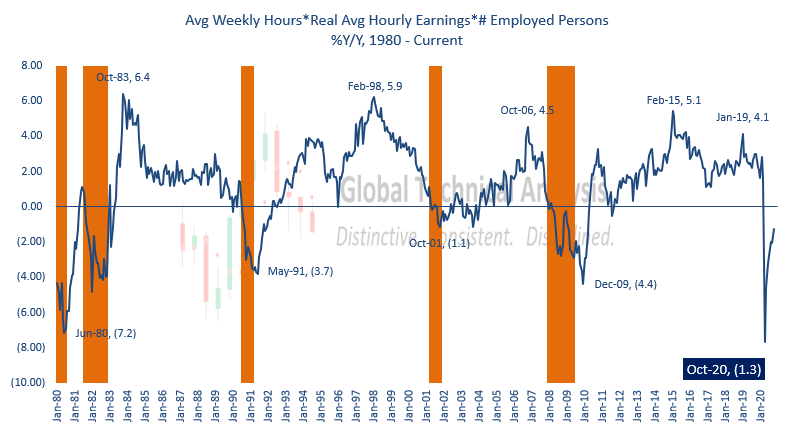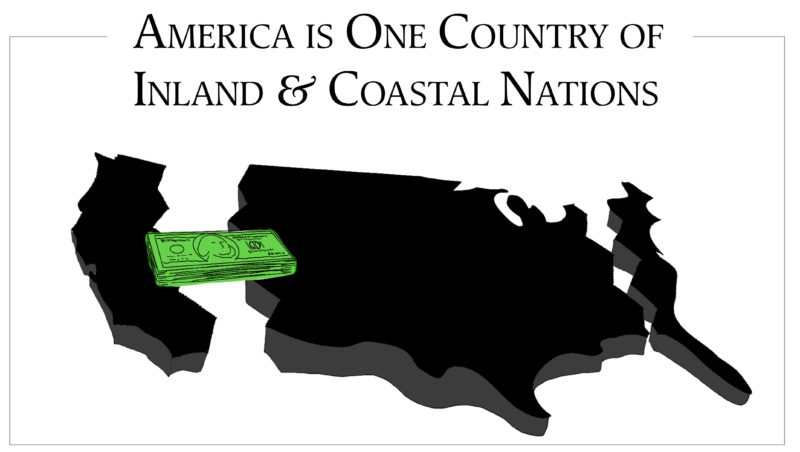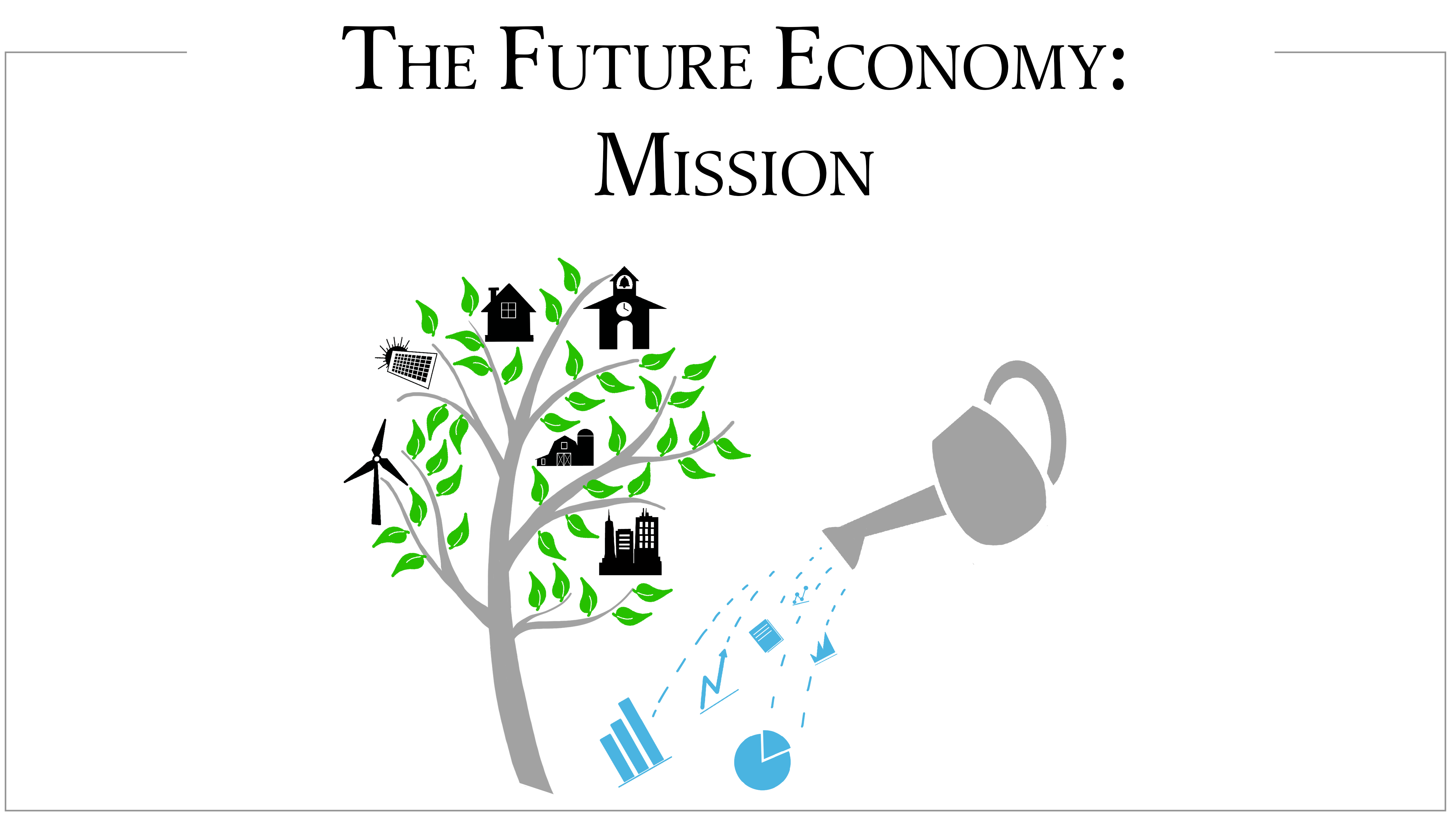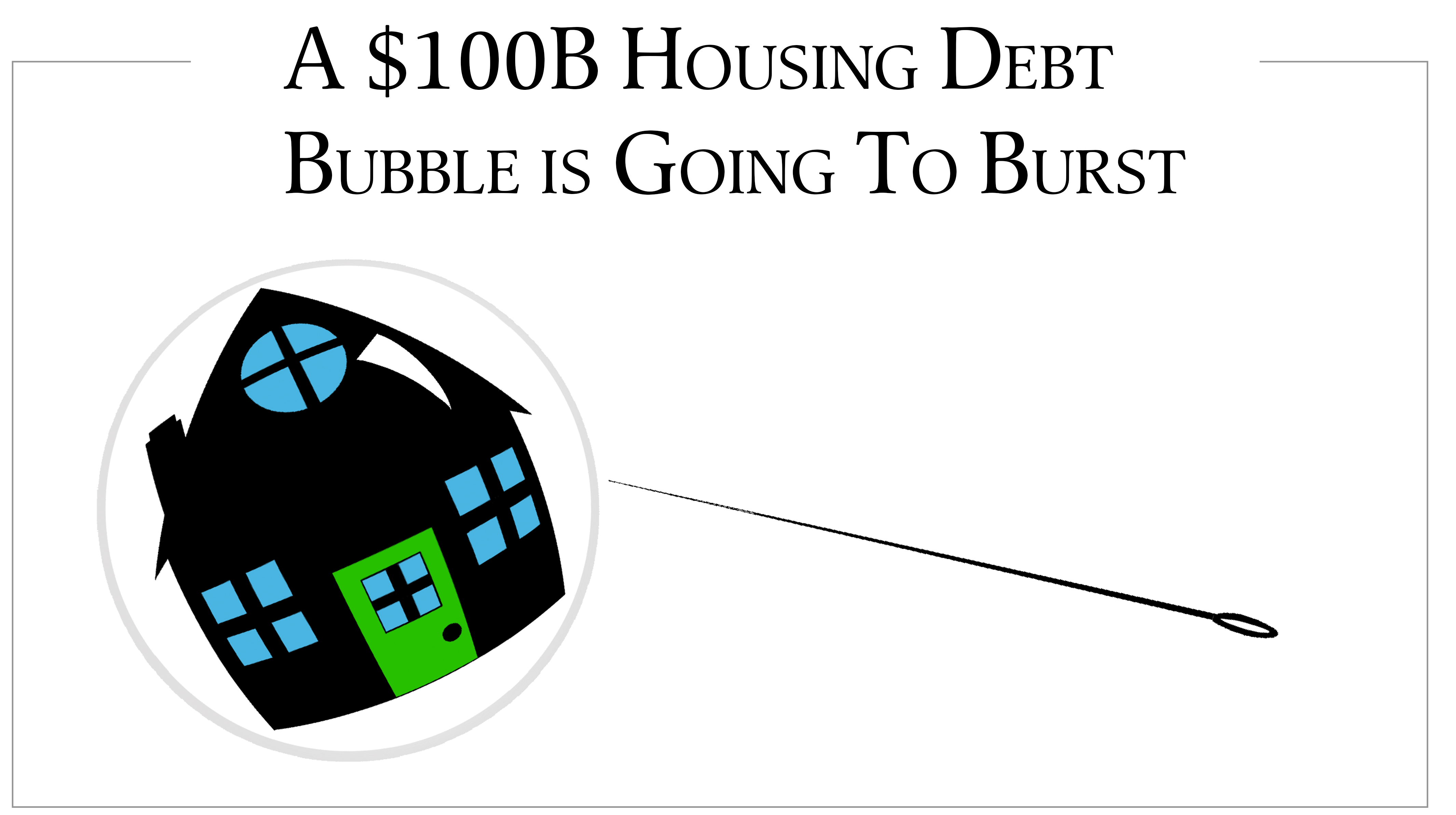“The 2020 election has confirmed that the U.S. remains a deeply divided country facing mounting challenges that threaten both this and future generations. Despite a collective wake-up call in the form of a health and economic crisis, the country seems both unwilling and unable to embark on the decisive measures needed.”
Mohamed El-Erian, Chief Economist, Allianz, 11/4/20
Two Nations One Country – The Inland Nation
America is two nations within one country. One nation is an Inland region spanning the interior Midwest, South, and many rural sections of coastal states, while the other area is urban Coastal. A mass exodus of manufacturing firms to overseas sites has hallowed out employment in these inland areas. Since China joined the World Trade Organization in 2000, companies transferred an estimated 5M manufacturing jobs to Asia and Mexico. Today, the Inland Nation faces even more job losses, a slow digital infrastructure, closing hospitals, declining population, and increasing drug usage. Farm bankruptcies in the upper Midwest are at the highest level since the 2008 recession. COVID-19 infections are surging in many inland states, including Montana, North Dakota, South Dakota, and Arkansas. Rural life requires hard work from before dawn to after dusk dealing with Nature’s challenges in farming and extraction industries. The people in the Inland Nation are independent-minded, running family-owned businesses. Yet, this region is home to a variety of significant food and natural resource commodity corporations. The Inland Nation provides almost twice the number of young men and women for our armed forces than coastal states. They have a deep faith in God and expect to work hard, and view handouts as support for laziness. During the COVID – 19 crisis, they had to work on a farm, in a meat processing plant or oil field, or other sites not from home.
The Coastal Nation
The foundation of Coastal Nation economies includes services businesses, like information technology, entertainment, banking, and government. The Coastal Nation is home to primarily college-educated workers using technology as platforms for their companies or daily work. Coastal economies have two times lower unemployment than rural areas. Digital internet access is ubiquitous at high speeds, either in the home or office. Incomes increase by a fast-growing set of international distribution channels and globalization. Multinational businesses have located administrative jobs around the world connected to headquarters by the internet. Average wages are 25- 50% higher than for workers in the Inland Nation. COVID-19 has hit coastal states like New York and New Jersey hard, but they have made the necessary investments in health infrastructure and doctors to meet the challenge more effectively than most rural areas. Life in coastal cities is fast-paced, based on knowledge-oriented jobs rather than dealing with Nature’s challenges. Information services companies are global, so knowledge workers are often on call 24 hours a day, working 60 – 70 hour weeks. Higher education is sought after and required to be successful in a highly competitive job market. Most workers in coastal areas work from home (WFH). Some WFH workers have accepted offers to perform remotely triggering moves to cheaper rural areas or inland states. The influx of new workers to rural and suburban communities drives housing prices to record highs not seen since 2014.
Coastal Nation Solid Employment, Inland Nation Weak Employment
There is a considerable gap in employment strength between the two national zones. The Inland Nation experiences continuing job losses, factory closings, and weakening markets for farm, commodities, and oil products. In contrast to Inland economies, the Coastal Nation enjoys economic growth, increasing personal income, and upward wealth creation. Cutting across national regions in the country is a working-class making 80% or less income percentile. The following chart from Brett Freeze, Global Technical Analysis, shows overall aggregate income stagnating.
Source: Global Technical Analysis – 11/6/20
Freeze observes that in 42 years real average weekly hour wage have only increased $1.42. Not nearly enough to take care of average inflation at 3% per year or 120 % during that period. Rising inflation forces workers to take two or three jobs to sustain their standard of living. When the economic pie continues to contract, areas like the Inland Nation feel the most financial pain.
The Inland – Coastal Economic Gap Creates Political Contention
Political analysts see income disparity between the regions as the critical factor for the political contention. Rural areas keep the Electoral College, which gives their citizens more representation for the President’s election, while coastal districts want a popular vote. It is not just in the Executive branch that there is distorted representation. In the Senate, the 500k citizens in Montana have two senators versus California, with 40M citizens served by two senators as well. The Federal government sets the market rules for businesses and work in both regions. Their views of what is critical to change are different, like climate change control versus deregulation of land based industries.
Build Economic Bridges Between Coastal and Inland Regions
So, how do we move the country ahead for both coastal and inland workers? Building economic bridges is an excellent place to start. In previous posts, we have proposed that the federal government act as a ‘seed’ funder in a consortium of local businesses, universities, angel investors, venture capitalists, and business incubators to support entrepreneurship in depressed rural areas and inner cities. Implementing a bridging economic infrastructure that is self-renewing for local economies will provide financial and social channels to build consensus and understanding. As products and services markets change, these self-renewing economic systems respond and make local businesses more resilient to rapid demand changes. Economic growth will create more jobs, income and provide the base for internet access upgrades, new health services, and housing. When we focus on building common services like a self-renewing economy, we will find more in common than people think.




